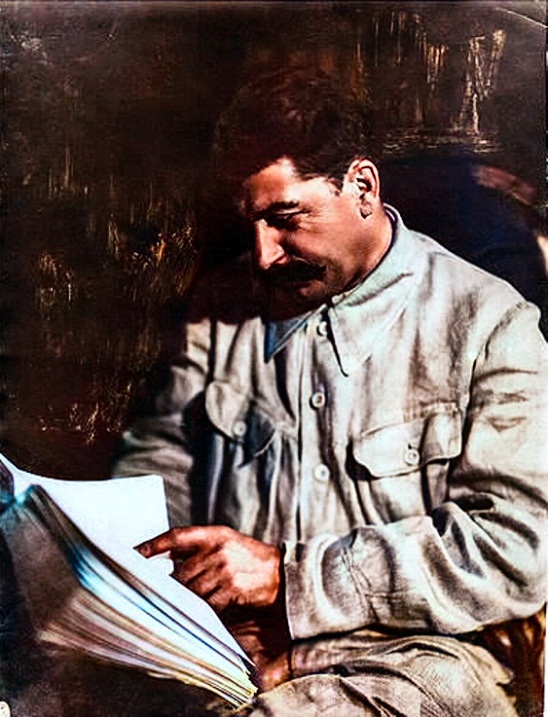spoiler
With two months left in office, the president for the first time authorized the Ukrainian military to use the system known as ATACMS to help defend its forces in the Kursk region of Russia.
Mr. Biden’s decision to allow Ukraine to use Army Tactical Missile Systems, or ATACMS, came in response to Russia’s decision to bring North Korean troops into the fight.Credit…John Hamilton/White Sands Missile Range, via Associated Press
President Biden has authorized the first use of U.S.-supplied long-range missiles by Ukraine for strikes inside Russia, U.S. officials said. The weapons are likely to be initially employed against Russian and North Korean troops in defense of Ukrainian forces in the Kursk region of western Russia, the officials said. Mr. Biden’s decision is a major change in U.S. policy. The choice has divided his advisers, and his shift comes two months before President-elect Donald J. Trump takes office, having vowed to limit further support for Ukraine. Allowing the Ukrainians to use the long-range missiles, known as the Army Tactical Missile Systems, or ATACMS, came in response to Russia’s surprise decision to bring North Korean troops into the fight, officials said. Mr. Biden began to ease restrictions on the use of U.S.-supplied weapons on Russian soil after Russia launched a cross-border assault in May in the direction of Kharkiv, Ukraine’s second-largest city. To help the Ukrainians defend Kharkiv, Mr. Biden allowed them to use the High Mobility Artillery Rocket System, or HIMARS, which have a range of about 50 miles, against Russian forces directly across the border. But Mr. Biden did not allow the Ukrainians to use longer-range ATACMS, which have a range of about 190 miles, in defense of Kharkiv. While the officials said they do not expect the shift to fundamentally alter the course of the war, one of the goals of the policy change, they said, is to send a message to the North Koreans that their forces are vulnerable and that they should not send more of them. The officials said that while the Ukrainians were likely to use the missiles first against Russian and North Korean troops that threaten Ukrainian forces in Kursk, Mr. Biden could authorize them to use the weapons elsewhere. Some U.S. officials said they feared that Ukraine’s use of the missiles across the border could prompt President Vladimir V. Putin of Russia to retaliate with force against the United States and its coalition partners. But other U.S. officials said they thought those fears were overblown. The Russian military is set to launch a major assault by an estimated 50,000 soldiers, including North Korean troops, on dug-in Ukrainian positions in Kursk with the goal of retaking all of the Russian territory that the Ukrainians seized in August. The Ukrainians could use the ATACMS missiles to strike Russian and North Korean troop concentrations, key pieces of military equipment, logistics nodes, ammunition depots and supply lines deep inside Russia. Doing so could help the Ukrainians blunt the effectiveness of the Russian-North Korean assault. Whether to arm Ukraine with long-range ATACMS has been an especially sensitive subject since Russia’s full-scale invasion of Ukraine in February 2022. Some Pentagon officials opposed giving them to the Ukrainians because they said the U.S. Army had limited supplies. Some White House officials feared that Mr. Putin would widen the war if they gave the missiles to the Ukrainians. Supporters of a more aggressive posture toward Moscow say Mr. Biden and his advisers have been too easily intimidated by Mr. Putin’s hostile rhetoric, and they say that the administration’s incremental approach to arming the Ukrainians has disadvantaged them on the battlefield.
Proponents of Mr. Biden’s approach say that it had largely been successful at averting a violent Russian response. Allowing long-range strikes on Russian territory using American missiles could change that equation. In August, the Ukrainians launched their own cross-border assault into the Kursk region, where they seized a swath of Russian territory. Since then, U.S. officials have become increasingly concerned about the state of the Ukrainian army, which has been stretched thin by simultaneous Russian assaults in the east, Kharkiv and now Kursk. The introduction of more than 10,000 North Korean troops and Mr. Biden’s response come as Mr. Trump prepares to re-enter office with a stated goal of quickly ending the war. Mr. Trump has said little about how he would settle the conflict. But Vice President-elect JD Vance has outlined a plan that would allow the Russians to keep the Ukrainian territory that their forces have seized. The Ukrainians hope that they would be able to trade any Russian territory they hold in Kursk for Ukrainian territory held by Russia in any future negotiations. If the Russian assault on Ukrainian forces in Kursk succeeds, Kyiv could end up having little to no Russian territory to offer Moscow in a trade. President Volodymyr Zelensky of Ukraine has long sought permission from the United States and its coalition partners to use long-range missiles to strike Russian soil. The British and French militaries have given the Ukrainians a limited number of Storm Shadow and SCALP missiles, which have a range of about 155 miles, less than the American missile system. While British and French leaders voiced support for Mr. Zelensky’s request, they were reluctant to allow the Ukrainians to start using their missiles on Russian soil unless Mr. Biden agreed to allow the Ukrainians to do the same with ATACMS. Mr. Biden was more risk-averse than his British and French counterparts, and his top advisers were divided on how to proceed. Some of them seized on a recent U.S. intelligence assessment that warned that Mr. Putin could respond to the use of long-range ATACMS on Russian soil by directing the Russian military or its spy agencies to retaliate, potentially with lethal force, against the United States and its European allies. The assessment warned of several possible Russian responses that included stepped-up acts of arson and sabotage targeting facilities in Europe, as well as potentially lethal attacks on U.S. and European military bases. Officials said Mr. Biden was persuaded to make the change in part by the sheer audacity of Russia’s decision to throw North Korean troops at Ukrainian lines.
He was also swayed, they said, by concerns that the Russian assault force would be able to overwhelm Ukrainian troops in Kursk if they were not allowed to defend themselves with long-range weapons. U.S. officials said they do not believe that the decision will change the course of the war. But they said Mr. Biden determined that the potential benefits — Ukraine will be able to reach certain high-value targets that it would not otherwise be able to, and the United States will be able to send a message to North Korea that it will pay a significant price for its involvement — outweighed the escalation risks. Mr. Biden faced a similar dilemma a year ago when U.S. intelligence agencies learned that the North Koreans would supply Russia with long-range ballistic missiles. In that case, Mr. Biden agreed to supply several hundred long-range ATACMS to the Ukrainians for use on Ukraine’s sovereign territory, including the Russian-occupied Crimean Peninsula. Those supplemented the more limited supplies of Storm Shadow and SCALP missiles that the Ukrainians received from Britain and France. The Ukrainians have since used many of those missiles in a concerted campaign of strikes against Russian military targets in Crimea and in the Black Sea. As a result, it is unclear how many of the missiles the Ukrainians have left in their arsenal to use in the Kursk region.


This is the logical next step for Nato/Ukraine. The AFU front has been receding twice as fast as it was this time last year, the options are to escalate or negotiate. Of course the US will not allow the latter.